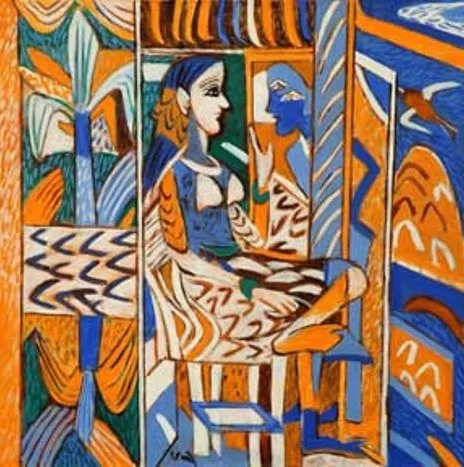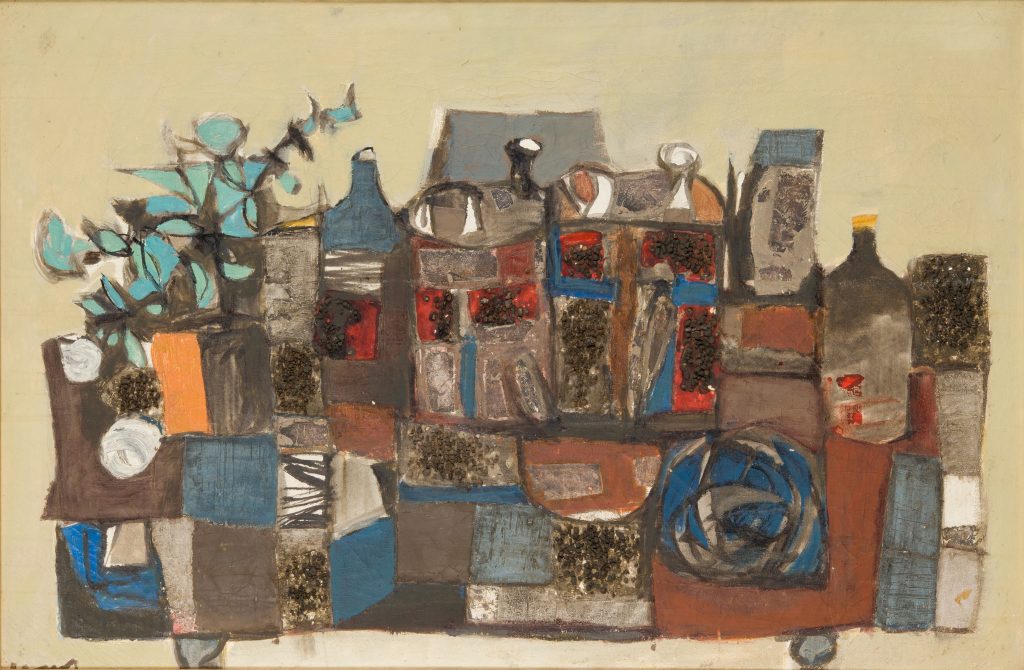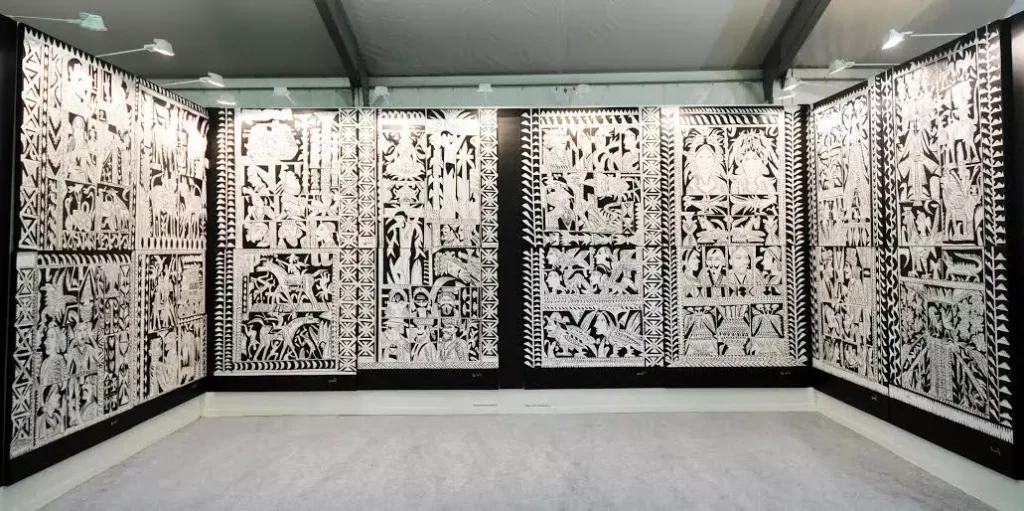Kalpathi Ganpathi ‘KG’ Subramanyan was an Indian painter, professor, author, illustrator, muralist, and freedom fighter. KG Subramanyan was a true artist. He had tried his hand at every medium possible – drawings, watercolours, oil paintings, canvas, acrylics, and more. He has also employed several forms including but not limited to sculptures, murals, set design, glass painting, weaving, and pottery.
Brief History
He was born in 1924 during the British Raj. A Gandhian at heart, he was imprisoned for his ideologies. He studied economics at the Presidency College, Madras, but could not find a teaching position due to his prison records. Visiting Kala Bhavan, Visva Bharati titillated him and visual arts piqued his interest. Soon, he was studying under the guidance of Nandala Bose, Benode Behari Mukherjee, and Ramkinkar Baij.

After his graduation in 1948, KG Subramanyan was teaching around the world, a profession he continued till his retirement in 1989. In 1965, he won Lalit Kala Akademi’s National Award. He has won three major civilian awards – Padma Shri (1975), Padma Bhushan (2006), and Padma Vibhushan (2012). Subramanyan took his final breath in 2016.
Painting Style
The cultural milieu had always informed his work. Despite drawing heavily from Indian mythology and folklore, he embedded them with his unique wit and eroticism, which has seduced the world. Whether it is Picasso’s cubism or the African mask-making techniques, his interests can be seen in his artwork clearly. He was the recipient of the JD Rockefeller III Fund Fellowship, granting him a chance to study in New York. Enthralled by the notion of semi-abstraction, he amalgamated them with the visceral traditional techniques, effectively modernizing and reviving them.

KG Subramanyan paintings are reminiscent of Kalighat and Pattachitra styles. One may even notice a hint of Kerala’s folk art and Indian court paintings in his work. To his admission, his work represents a multitude of traits – “liveliness, elegance, oddness, comedy, tragedy, metamorphic overlay, even allegory.” He was curious about folk art, which to him imbued mobility. He had a knack for distorted forms, occasionally incorporating them into his paintings. It reflected the twisted comprehension of the viewers. Their heavy usage blurred the lines between reality and fantasy.
KG Subramanyan Paintings
Throughout his career, he had produced masterpieces, one after another. The name Subramanyan evokes a few of those, which are discussed below.
War of Relics (2013)
KG Subramanyan took it upon himself to paint a mural on the walls of Kala Bhavan at the age of 86. This inspired him to put forth his experimental piece two years later, in 2013. This piece is called War of Relics and features 16 humongous panels of black and white acrylic canvas. Subramanyan tries to take the viewers on a journey through time. He narrates the story of unification via cultural codes in the ancient epoch. Over time, the meanings associated with these artefacts vanished, plunging the world into a divisive state, permeated with war.

Anatomy Lessons (2006)
This artwork is created entirely on terracotta. The pieces are a nod to the repercussions of violence and the disharmony it causes. It features fragments of human limbs and heads juxtaposed bizarrely. It seems as if the heads are nostalgic over their shared pain, inflicted by constant trial and ostracization.

Photo Courtesy – Saffron Art
Benodbihari Mukherjee: A Blind Artist and his Lost Scroll found after a Century





